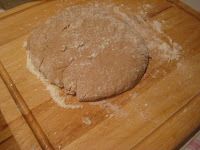Y'all knew it was coming, the scone blog. I know you wish you had scratch and sniff computers now but you can always come get some! Most of my friends know my oven saga - the new one is due to come on July 12th - just in time to bake a cake for the kid's 17th birthday!
The Scone is the essential part of our English Afternoon Tea, best served with strawberry Jam and clotted cream, in my opinion. It is yet another food in my childhood memory list!
I've been making scones for probably 20-25 years. I did not do much cooking or baking with my father, but I can remember him teaching me how to feel the food with my hands when we made pastry and I feel that way with scones. I can also smell when they are done, slightly odd but true! I would only eat a scone fresh out of the oven, the only way to eat them.
Some people believe that the scone was named after the Stone of Destiny which was a stone throne on which Scottish kings would sit to be crowned. The Oxford dictionary on the other hand believes that it comes from a word "sgonn" meaning mouthful or shapeless mass, or the German word "sconbrot" meaning beautiful bread.
Originally, scones were made with oats, shaped into a large round, scored into four or six wedges and griddle-baked over an open fire. With the advent of oven baking, the round of dough was cut into wedges and the scones were baked individually. I actually thought about trying to grill some while I have had no stove - an alternative to the easy bake oven!
Today’s scones are quick breads, similar to American biscuits. They are traditionally made with wheat flour, sugar, baking powder or baking soda, butter, milk and eggs, and baked in the oven—both in the traditional wedge form and in round, square and diamond shapes. This recipe produces a hard, dry texture.
Traditional English scones may include raisins or currants, but are often plain, relying on jam, preserves, lemon curd or honey for added flavor—perhaps with a touch of clotted cream. Fancy scones—with dried fruit such as cranberries and dates, nuts, orange rind, chocolate morsels and other flavorings—are best enjoyed without butter and jam.
Getting ready for a small batch
These were Cinnamon Scones - you add your flavoring at the dry stage
I use Heavy Cream


For some reason I only took a photo of the unbaked - maybe I was delivering these unbaked to someone?
Here are some Freshly baked Lemon Poppyseed Scones!
I don't give out my scone recipe - just the Scones!
Thanks for reading.....




No comments:
Post a Comment